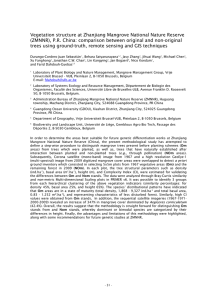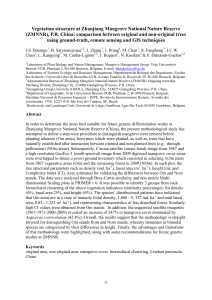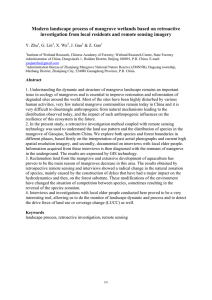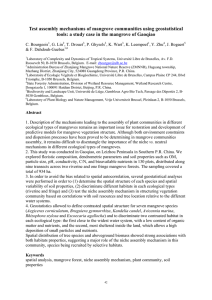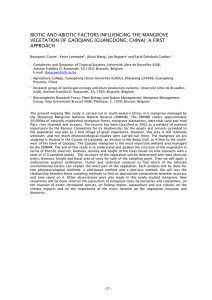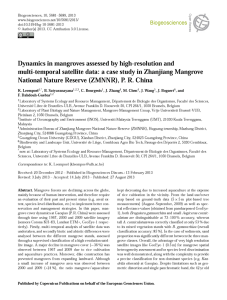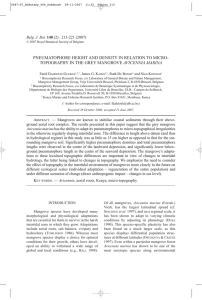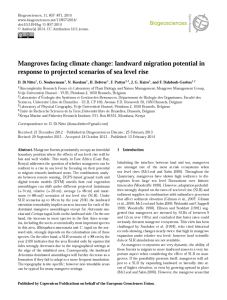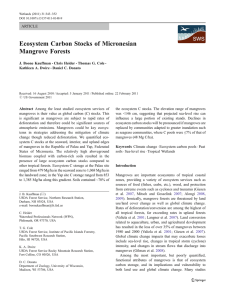Spatial heterogeneity in mangroves assessed by GeoEye-1 satellite data: a
advertisement
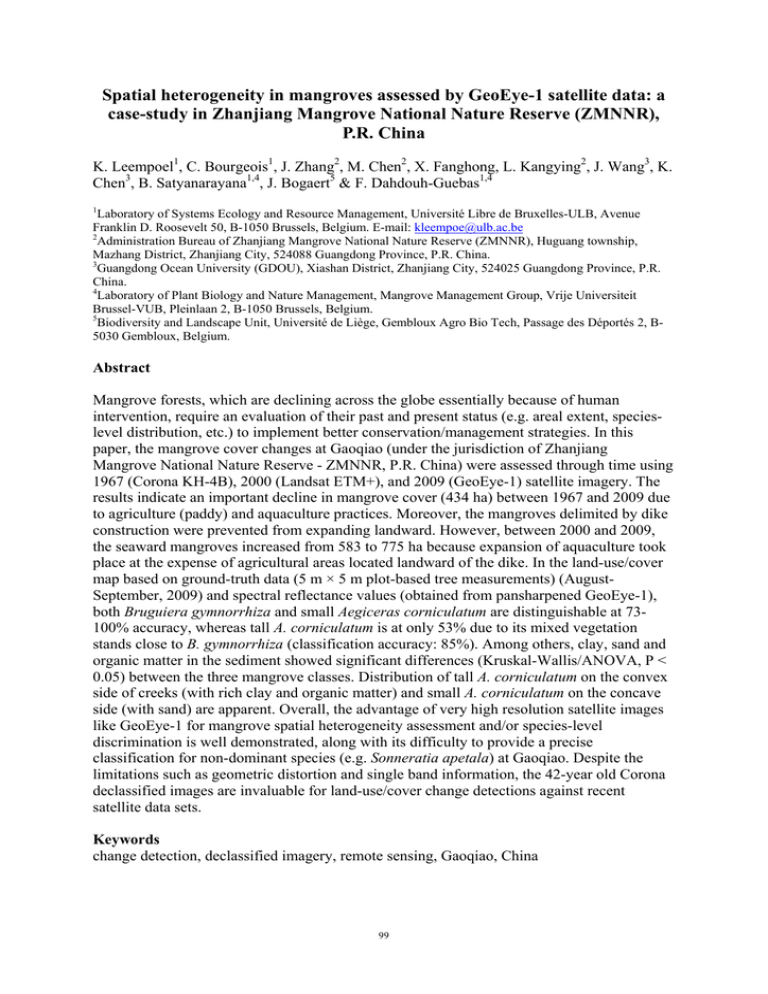
Spatial heterogeneity in mangroves assessed by GeoEye-1 satellite data: a case-study in Zhanjiang Mangrove National Nature Reserve (ZMNNR), P.R. China K. Leempoel1, C. Bourgeois1, J. Zhang2, M. Chen2, X. Fanghong, L. Kangying2, J. Wang3, K. Chen3, B. Satyanarayana1,4, J. Bogaert5 & F. Dahdouh-Guebas1,4 1 Laboratory of Systems Ecology and Resource Management, Université Libre de Bruxelles-ULB, Avenue Franklin D. Roosevelt 50, B-1050 Brussels, Belgium. E-mail: kleempoe@ulb.ac.be 2 Administration Bureau of Zhanjiang Mangrove National Nature Reserve (ZMNNR), Huguang township, Mazhang District, Zhanjiang City, 524088 Guangdong Province, P.R. China. 3 Guangdong Ocean University (GDOU), Xiashan District, Zhanjiang City, 524025 Guangdong Province, P.R. China. 4 Laboratory of Plant Biology and Nature Management, Mangrove Management Group, Vrije Universiteit Brussel-VUB, Pleinlaan 2, B-1050 Brussels, Belgium. 5 Biodiversity and Landscape Unit, Université de Liège, Gembloux Agro Bio Tech, Passage des Déportés 2, B5030 Gembloux, Belgium. Abstract Mangrove forests, which are declining across the globe essentially because of human intervention, require an evaluation of their past and present status (e.g. areal extent, specieslevel distribution, etc.) to implement better conservation/management strategies. In this paper, the mangrove cover changes at Gaoqiao (under the jurisdiction of Zhanjiang Mangrove National Nature Reserve - ZMNNR, P.R. China) were assessed through time using 1967 (Corona KH-4B), 2000 (Landsat ETM+), and 2009 (GeoEye-1) satellite imagery. The results indicate an important decline in mangrove cover (434 ha) between 1967 and 2009 due to agriculture (paddy) and aquaculture practices. Moreover, the mangroves delimited by dike construction were prevented from expanding landward. However, between 2000 and 2009, the seaward mangroves increased from 583 to 775 ha because expansion of aquaculture took place at the expense of agricultural areas located landward of the dike. In the land-use/cover map based on ground-truth data (5 m × 5 m plot-based tree measurements) (AugustSeptember, 2009) and spectral reflectance values (obtained from pansharpened GeoEye-1), both Bruguiera gymnorrhiza and small Aegiceras corniculatum are distinguishable at 73100% accuracy, whereas tall A. corniculatum is at only 53% due to its mixed vegetation stands close to B. gymnorrhiza (classification accuracy: 85%). Among others, clay, sand and organic matter in the sediment showed significant differences (Kruskal-Wallis/ANOVA, P < 0.05) between the three mangrove classes. Distribution of tall A. corniculatum on the convex side of creeks (with rich clay and organic matter) and small A. corniculatum on the concave side (with sand) are apparent. Overall, the advantage of very high resolution satellite images like GeoEye-1 for mangrove spatial heterogeneity assessment and/or species-level discrimination is well demonstrated, along with its difficulty to provide a precise classification for non-dominant species (e.g. Sonneratia apetala) at Gaoqiao. Despite the limitations such as geometric distortion and single band information, the 42-year old Corona declassified images are invaluable for land-use/cover change detections against recent satellite data sets. Keywords change detection, declassified imagery, remote sensing, Gaoqiao, China 99
